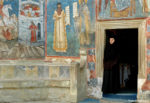Beginner’s Guide to Romania’s Painted Monasteries of Bucovina
As a MIR tour manager since 1998, I’ve led many MIR tours to the Bucovina region of Romania and to its painted monasteries, constructed in medieval times. Bucovina is a remote province tucked in the northeastern corner of Romania near Ukraine.
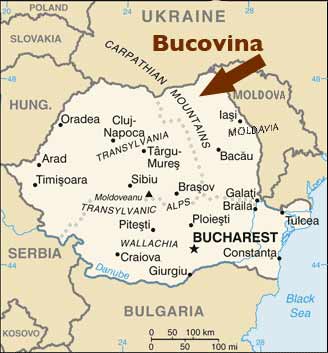
What is a Painted Monastery?
These are no run-of-the-mill churches. They are Romanian Orthodox monasteries with stories from the Bible and from history painted on their church walls: masterpieces of Byzantine art. Each painted monastery is distinctive in color and in its frescoed Bible stories. Because few could read or write in the Middle Ages, these pictures – inside and out – taught peasants these tales.
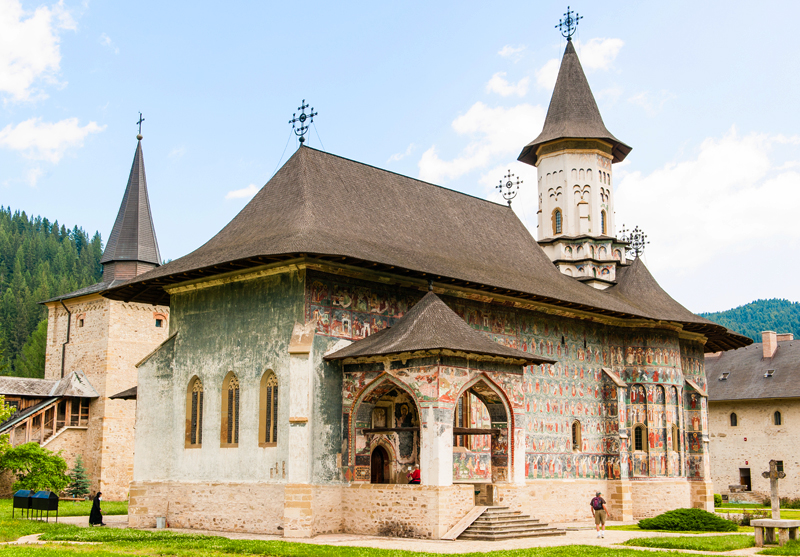
Today, the monasteries are pilgrimage sites for Romanian Orthodox believers as well as highlights for travelers from all over the world. Nuns live and work at most of these monasteries, standing out in their distinctive black habits and veils.
Here are some notes on what to look for when you visit four of Bucovina’s most notable monasteries:
Voronet: Blue on Blue
Voronet monastery’s distinctively vivid blue color is now known among artists as “Voronet blue.” Sometimes called the “Sistine Chapel of the East,” Voronet’s Gothic and Byzantine details dominate its most famous fresco, the Last Judgment.
(click image to view larger photo)
Voronet Notes:
- History: They say Voronet was built in 3 months, 3 weeks, and 3 days.
- Dominant color: “Voronet blue” is a dark sky-blue hue made with crushed lapis luzuli.
- Most famous fresco: Last Judgment, with angels rolling up the zodiac to indicate that the world is ending. At the bottom of the fresco are the condemned – Turks and Tatars – who are claimed by the devil.
- Notice: About 20 resident nuns live at the Voronet Monastery.
Sucevita: Ladder of Virtues
In Sucevita blue-green dominates the frescoes on the façade of the church, with its single steeple and massive fortress walls.
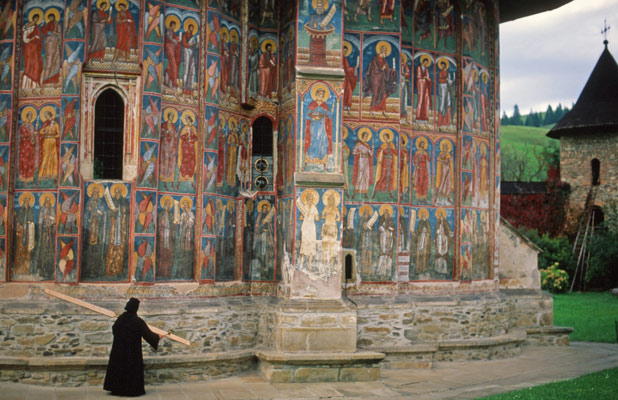
Sucevita Notes:
- History: It’s the last painted monastery built in Romania, and the only church with two iconostases – altar screens filled with icons and carvings.
- Dominant color: green
- Most famous fresco: Ladder of Virtues
- Notice: More than fifty nuns live here, the largest number of all the monasteries.
Moldovita: Historic Frescoes
Another popular painted monastery is Moldovita, where gold and yellow predominate in the frescoed depictions.
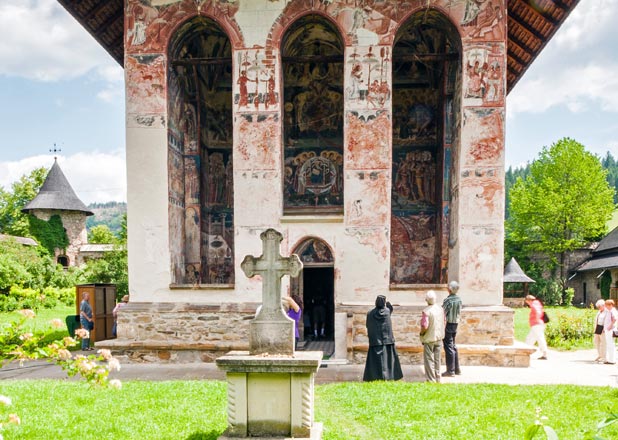
Moldovita Notes:
- History: First built in the early 15th century, this church was destroyed by mudslides and later rebuilt in the 16th century.
- Dominant color: golds and deep blues
- Most famous fresco: Siege of Constantinople, depicting the Ottoman capture of the Byzantine capital
- Notice: The Moldovita Monastery is well fortified, surrounded by thick fortress walls.
Humor: Parables
A fourth famous monastery is a tiny treasure called Humor, known for its reddish-brown hues.
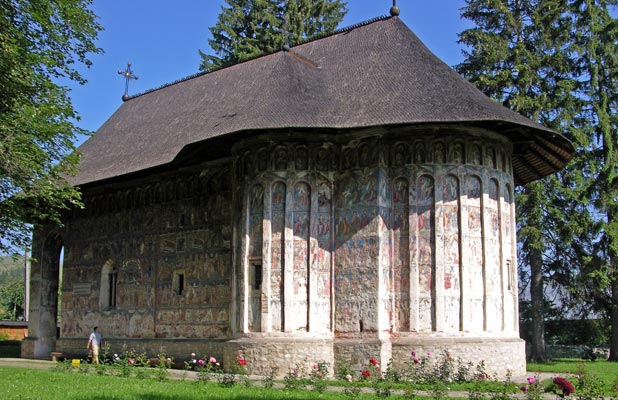
Humor Notes:
- History: It’s the smallest of the monasteries seen on a MIR tour, and located near the Humor River. Built in 1530 and closed in 1786, Humor reopened in 1990.
- Dominant color: reddish-brown
- Most famous fresco: Return of the Prodigal Son, as well as a fresco of the devil depicted as a woman
- Notice: The three-story lookout tower is made of wood and bricks; you can climb it for views of the bucolic Romanian countryside.
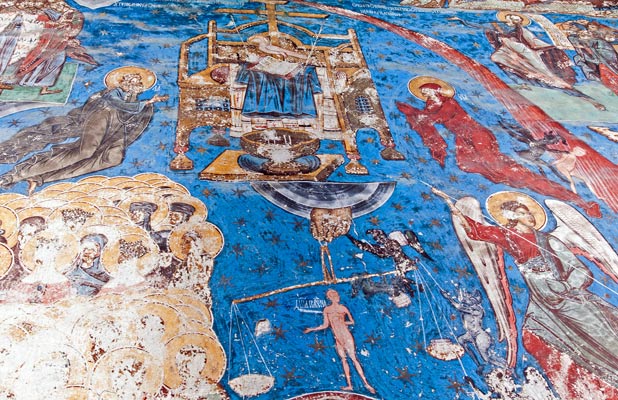
Travel to Romania with MIR
MIR has more than two decades of Romania travel experience, offering on-the-ground support, quality you can trust, and guides and tour managers that clients rave about.
Where once people sought sanctuary from war inside these monasteries, today Bucovina is a sanctuary for travelers in search of illustrated history and medieval places of worship.
You can stand in awe before these historic buildings on MIR’s small group tour that visits Bucovina – Bulgaria & Romania: Frescoes & Fortresses – or on our pre-packaged private Essential Romania program. MIR can also create a hand-crafted, custom private journey that includes these UNESCO-listed painted monasteries in your itinerary.
